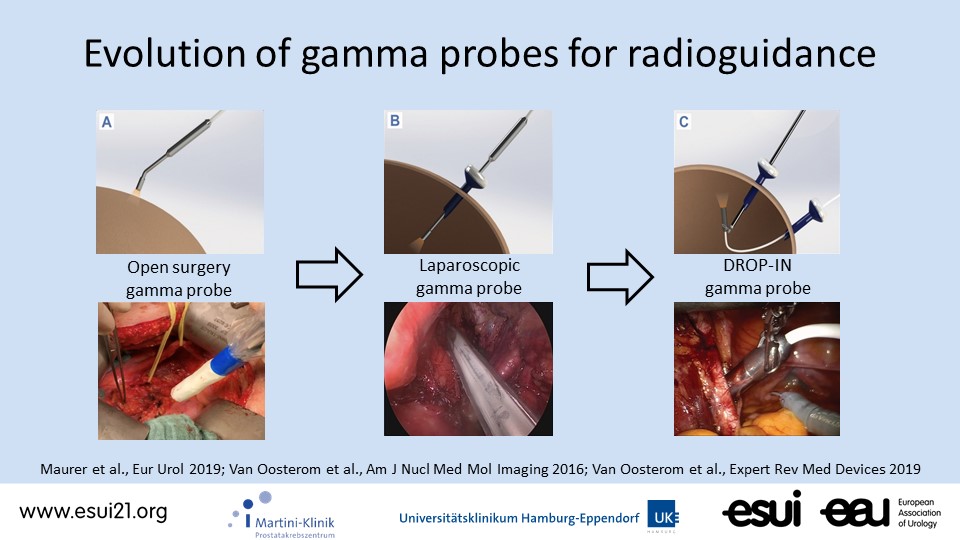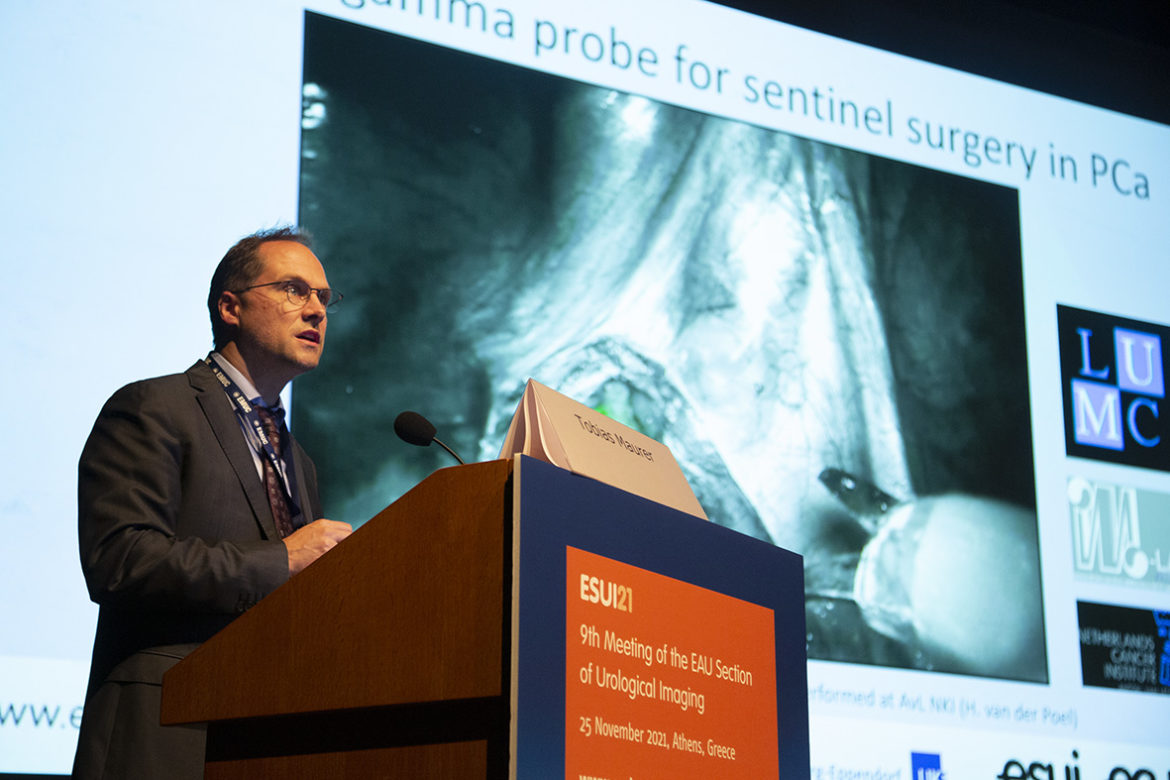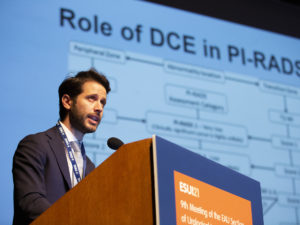“Plenary Session 6: The PSMA PET corner” at ESUI21 in Athens featured two different kinds of presentations: Dr. Pim Van Leeuwen’s (NL) “Will PSMA PET CT replace mpMRI?” and Prof. Dr. Tobias Maurer’s (DE) “The Drop In: Robotic radio-guided surgery.”
Dr. Van Leeuwen’s lecture demonstrated that there is more than one answer to the question the title of his presentation posed. Supported by study results, most notably the study by Arveen A. Kalapara et al. published in BJU International that had as one of its conclusions that “no significant difference in the detection or localisation of primary prostate cancer between 68Ga-PSMA PET/CT and mpMRI” was found, Dr. Van Leeuwen came to his first firm conclusion: “PSMA PET/CT will not replace mpMRI for primary diagnosis and staging. There’s no reason to.”
However, there are occasions a PSMA PET should be performed in primary staging according to Dr. Van Leeuwen. “In those patients who cannot have an mpMRI, who have a high-risk disease for metastatic screening, and in PIRADS 1-3 patients who are being considered for observation rather than biopsy, reducing the likelihood of missing a diagnosis of clinically significant prostate cancer,” Prof. Van Leeuwen enumerated.
“Also, PSMA PET/CT is better than mpMRI for primary staging of the pelvic lymph nodes.”
DROP-IN gamma probe
Prof. Dr. Maurer started off his presentation by showing the evolution of gamma probes for radio-guidance (see slide below).
“A CE-certified DROP-IN gamma probe is suitable and can be safely used for sentinel surgery as well as PSMA-radio-guided surgery procedures,” he said later in his presentation. Prof. Dr. Maurer gave a quick side note and advised his listeners to perform sentinel surgery for primary prostate cancer and PSMA-radio-guided surgery mainly for recurrent PCa.
He continued, “A small size of a DROP-IN probe allows rotational freedom. It is useful for both in-vivo and bedside ex-vivo gamma-radiation measurements.”
“A DROP-IN gamma probe enables minimally invasive robotic procedures, reducing morbidity.”
Did you miss this session or any other? ESUI21 delegates can access all scientific content in the EMUC21/ESUI21 Resource Centre. All presentations, full-text abstracts, and (e-)posters will become easily accessible here as both meetings progress.




